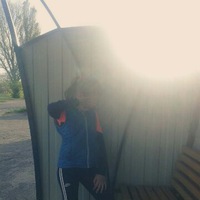
БУДОВА РОСЛИНИ.............
 0
0
 0
0
Ответы на вопрос
 Внимание! Ответы на вопросы дают живые люди. Они могут содержать ошибочную информацию, заблуждения, а также ответы могут быть сгенерированы нейросетями. Будьте внимательны. Если вы уверены, что ответ неверный, нажмите кнопку "Пожаловаться" под ответом.
Внимание! Ответы на вопросы дают живые люди. Они могут содержать ошибочную информацию, заблуждения, а также ответы могут быть сгенерированы нейросетями. Будьте внимательны. Если вы уверены, что ответ неверный, нажмите кнопку "Пожаловаться" под ответом.

 0
0
 0
0

Structure of a Plant
The structure of a plant consists of various parts that work together to support its growth, reproduction, and survival. These parts include the roots, stem, leaves, flowers, and fruits. Let's explore each of these parts in more detail:
1. Roots: The roots are usually found underground and serve several important functions. They anchor the plant in the soil, absorb water and nutrients from the soil, and store food for the plant. Roots can vary in size, shape, and structure depending on the type of plant and its environment.
2. Stem: The stem is the main structural component of a plant that supports the leaves, flowers, and fruits. It provides a pathway for the movement of water, nutrients, and sugars between the roots and the rest of the plant. The stem also helps in the transport of hormones and provides mechanical support.
3. Leaves: Leaves are the primary site of photosynthesis in plants. They are usually flat and thin, allowing for maximum exposure to sunlight. Leaves contain chlorophyll, a pigment that captures sunlight and converts it into chemical energy through photosynthesis. They also play a role in transpiration, the process by which plants lose water vapor through small openings called stomata.
4. Flowers: Flowers are the reproductive structures of flowering plants. They are responsible for the production of seeds and fruits. Flowers attract pollinators such as bees, butterflies, and birds, which help in the transfer of pollen from the male reproductive organs (stamens) to the female reproductive organs (pistil). This process is essential for fertilization and seed formation.
5. Fruits: Fruits are the mature ovaries of flowering plants. They develop from fertilized flowers and contain seeds. Fruits serve as a means of seed dispersal, as they are often eaten by animals who then spread the seeds through their droppings. Fruits come in various shapes, sizes, and textures, and can be classified as fleshy fruits (e.g., apples, oranges) or dry fruits (e.g., nuts, grains).
 0
0
 0
0
Топ вопросов за вчера в категории Биология
Последние заданные вопросы в категории Биология
-
Математика
-
Литература
-
Алгебра
-
Русский язык
-
Геометрия
-
Английский язык
-
Химия
-
Физика
-
Биология
-
Другие предметы
-
История
-
Обществознание
-
Окружающий мир
-
География
-
Українська мова
-
Информатика
-
Українська література
-
Қазақ тiлi
-
Экономика
-
Музыка
-
Право
-
Беларуская мова
-
Французский язык
-
Немецкий язык
-
МХК
-
ОБЖ
-
Психология
-
Физкультура и спорт
-
Астрономия
-
Кыргыз тили
-
Оʻzbek tili





















